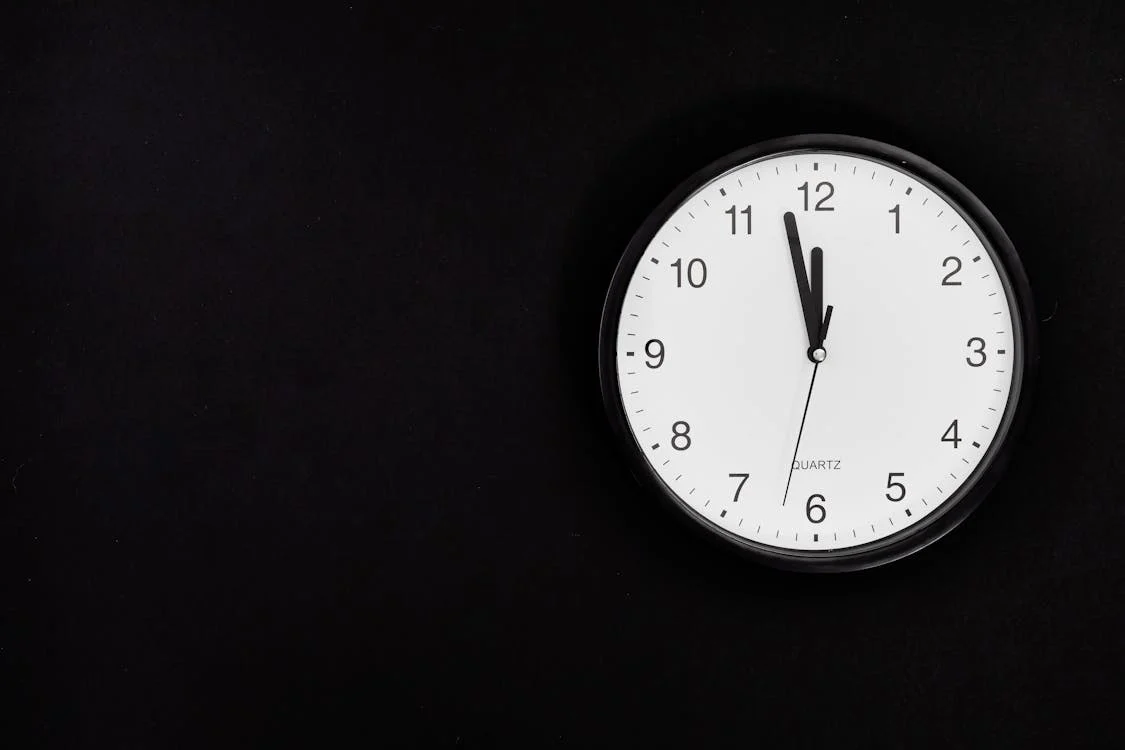A Close Look At Circadian Rhythms: Human Health & The Circadian Clock
While the clocks in our homes go ‘tick tock’ throughout the day, our bodies also have internal ‘clocks’ that follow them – called circadian rhythms.
Author:Daniel JamesReviewer:Karan EmeryMay 22, 202495 Shares9.5K Views

While the clocks in our homes go ‘tick tock’ throughout the day, our bodies also have internal ‘clocks’ that follow them – called circadian rhythms. Those who have flown to the other side of the world would know that our bodies become jet-lagged in the time zones we find ourselves in; these are known as transient disruptionsin our internal circadian ‘clocks’.
So what constitutes a circadian rhythm? Etymologically speaking, the word ‘Circadian’ comes from Latin, meaning ‘around the day’. They are cycles that repeat every 24 hours and help regulate our sleep and alertness in response to light changes in our environments.
Americans are not sleeping enough, and frankly, it is slowly killing us. The National Sleep Foundation found in 2020that 28% of American adults felt sleepy between 0-1 days; 44% between 2-4 days; and 28% between 5-7 days each week. Circadian rhythms serve a foundational purpose, not only in our sleep but for our entire livelihoods.
Understanding these clocks in our bodies allows us to make healthier lifestyle decisions, and recently, impaired circadian rhythms have become associated with mental disorders, which is particularly relevant for those studying an online clinical counseling masters. Keep reading to learn about the inner workings of these ‘clocks’ penetrating every facet of our lives.
A Network of Clocks
The average circadian rhythm for an adult sits at around 24.2 hours. In fact, our circadian rhythms function not through one singular clock but a whole network of clocks scattered across our bodies.
The Master Clock
The first and foremost circadian clock is known as the ‘Master Clock’. It is located in a region of our brains called the suprachiasmatic nuclei (SCN) of the hypothalamus, which manages our body temperature, hunger, thirst, libido, and sleep. The SCN comprises two bodies of several thousand nerve cells that ‘sense’ time based on external stimuli, such as lightness and darkness. Two types of SCN inputs facilitate the modulation of our circadian rhythms: photic and non-photic.
The former refers to inputs received from intrinsically photosensitive retinal ganglion cells (ipRGCs), essentially light-sensitive cells in the retina that can detect external light input directly, albeit without visual form. The latter refers to any input independent of light, such as temperature, meal time, or physical activity. SCN inputs play a fundamental role in synchronizing the circadian clocks and rhythms throughout the body.
Peripheral Clocks
Other circadian clocks across our bodies are called ‘Peripheral Clocks’. They are found in organs such as the liver, kidneys, pancreas, and heart. As nearly every organism on Earth has its circadian clocks, in 2023 the French National Centre for Scientific Research (CNRS), the Université Paris (France), and the University of Queensland (Australia) conducted a studythrough mice on the liver’s impact on circadian rhythms. Researchers implanted livers containing human hepatocytes, liver cells that have detoxifying and metabolic functions, into the mice. The study found significant alterations in the circadian rhythms of the mice, with an overall two-hour advancementin their daily cycles (sleeping, eating, etc.) – mice are nocturnal animals, so this is very unusual.
Traditionally, it was believed that circadian rhythms operated in a centralized manner, where the ‘Master Clock’ is the primary synchronizer of subordinate ‘Peripheral Clocks’; this study clearly shows that this is not the case. Peripheral cells can regulate between 3-10 percent, to as much as 50 percent, of gene activity in our bodies, so despite their name, they obviously assume equal importance to their central counterpart.
Relationship with Sleep
Circadian rhythms have an overarching control over our sleep-wake cycles, and they have a vital role in allowing a person to stay up for about 16 hours straight every day and sleep at night. With most circadian rhythms, when evening falls the SCN (‘Master Clock’) begins its pattern of projecting to the pineal gland to release the melatonin hormone. Melatonin is also known as the ‘sleep hormone’ as it is the main cause of that drowsy or sleepy feeling we get at night. The hormone slows cells down, signaling that it is time to sleep. Melatonin generally peaks between 2-4 am, reduces by morning to allow wakefulness, and reaches its lowest levels in broad daylight.
However, in our current digital age, with the proliferation of smartphones and computer screens, our melatonin and circadian patterns have become significantly altered, and even, disrupted. Artificial light, also called ‘blue light’, is known to be a disruptive factor in melatonin secretion, affecting sleep time and quality. Some institutions have started using Red Light Therapyto counteract blue lights, given that red-colored lights improve melatonin production. Night shifts are also another issue that entails disorders such as shift work sleep disorder (SWSD), characterized by symptoms ranging from insomnia (sleeplessness at night) to hypersomnia (excessive sleepiness in daytime).
Implications for Human Health
Circadian disruptions or misalignments are associated with various human health problems, with conditions such as:
- Sleep disorders – insomnia and hypersomnia.
- Cardiovascular diseases – hypertension.
- Metabolic diseases – obesity and type 2 diabetes.
- Mood disturbances – anxiety and depression.
For example, the pancreas–which stores glucose and secretes insulin–is part of the ‘Peripheral Clock System’ and has a biological clock for its functions. Under a normal circadian cycle, it is highly active during the day and largely inactive at night. This is not random and follows a logical cycle where our bodies are programmed to conserve and maintain stable glucose levels between dinner and breakfast. If one has a habit of consuming large amounts of sugar or sweets at night, it can lead to the pancreas being unable to respond to these increased blood glucose levels. A disturbed circadian rhythm in this case therefore accelerates the risk of diabetes through pancreatic dysfunction.
Besides technology, night shift work, and jet lag, physical brain damage to the brain, such as brain infections, head injuries, stroke, dementia, and Alzheimer's disease, or insensitivities to day and night cycles, can all cause circadian disturbances. Taking certain drugs, such as antidepressants, is also associated with circadian misalignments.
So if your circadian rhythm has been disrupted, how do you ‘reset’ it? While one should not expect it to be fixed overnight, there are some natural, simple, and effective ways for rectification:
- Have a consistent routine.
- Reduce screen time.
- Avoid alcohol and caffeine at night.
- Avoid afternoon naps.
- Gradually move bedtimes forward by 15 to 30 minutes.
A good circadian rhythm allows you to enjoy quality sleep, prevent you from getting diseases, and maintain your long-term health. If you are experiencing a circadian rhythm disorder, it is recommended that you should contact your doctor or a sleep therapist.

Daniel James
Author
Daniel James is a distinguished gerontologist, author, and professional coach known for his expertise in health and aging.
With degrees from Georgia Tech and UCLA, including a diploma in gerontology from the University of Boston, Daniel brings over 15 years of experience to his work.
His credentials also include a Professional Coaching Certification, enhancing his credibility in personal development and well-being.
In his free time, Daniel is an avid runner and tennis player, passionate about fitness, wellness, and staying active.
His commitment to improving lives through health education and coaching reflects his passion and dedication in both professional and personal endeavors.

Karan Emery
Reviewer
Karan Emery, an accomplished researcher and leader in health sciences, biotechnology, and pharmaceuticals, brings over two decades of experience to the table. Holding a Ph.D. in Pharmaceutical Sciences from Stanford University, Karan's credentials underscore her authority in the field.
With a track record of groundbreaking research and numerous peer-reviewed publications in prestigious journals, Karan's expertise is widely recognized in the scientific community.
Her writing style is characterized by its clarity and meticulous attention to detail, making complex scientific concepts accessible to a broad audience. Apart from her professional endeavors, Karan enjoys cooking, learning about different cultures and languages, watching documentaries, and visiting historical landmarks.
Committed to advancing knowledge and improving health outcomes, Karan Emery continues to make significant contributions to the fields of health, biotechnology, and pharmaceuticals.
Latest Articles
Popular Articles

